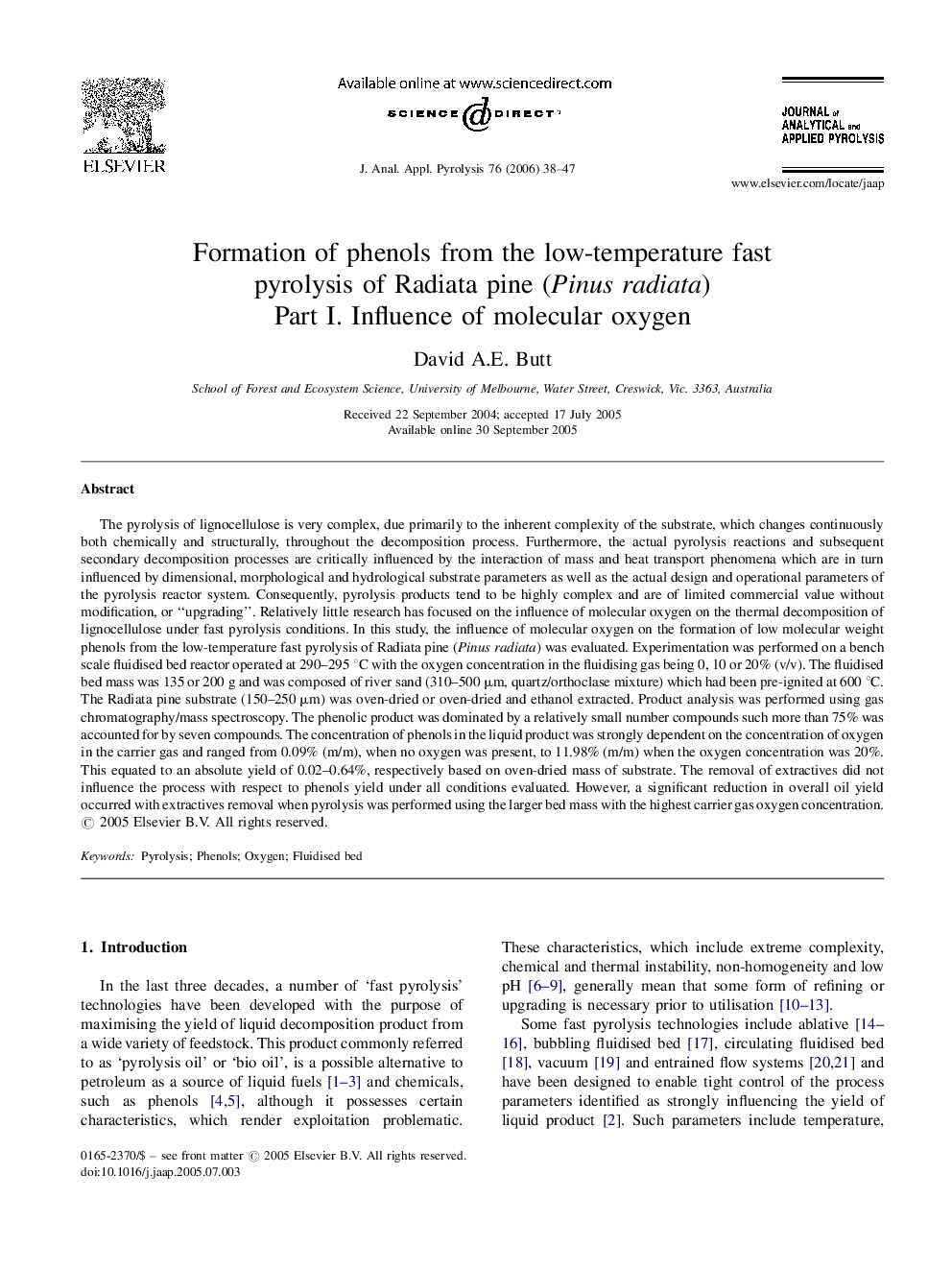| Article ID | Journal | Published Year | Pages | File Type |
|---|---|---|---|---|
| 1198199 | Journal of Analytical and Applied Pyrolysis | 2006 | 10 Pages |
The pyrolysis of lignocellulose is very complex, due primarily to the inherent complexity of the substrate, which changes continuously both chemically and structurally, throughout the decomposition process. Furthermore, the actual pyrolysis reactions and subsequent secondary decomposition processes are critically influenced by the interaction of mass and heat transport phenomena which are in turn influenced by dimensional, morphological and hydrological substrate parameters as well as the actual design and operational parameters of the pyrolysis reactor system. Consequently, pyrolysis products tend to be highly complex and are of limited commercial value without modification, or “upgrading”. Relatively little research has focused on the influence of molecular oxygen on the thermal decomposition of lignocellulose under fast pyrolysis conditions. In this study, the influence of molecular oxygen on the formation of low molecular weight phenols from the low-temperature fast pyrolysis of Radiata pine (Pinus radiata) was evaluated. Experimentation was performed on a bench scale fluidised bed reactor operated at 290–295 °C with the oxygen concentration in the fluidising gas being 0, 10 or 20% (v/v). The fluidised bed mass was 135 or 200 g and was composed of river sand (310–500 μm, quartz/orthoclase mixture) which had been pre-ignited at 600 °C. The Radiata pine substrate (150–250 μm) was oven-dried or oven-dried and ethanol extracted. Product analysis was performed using gas chromatography/mass spectroscopy. The phenolic product was dominated by a relatively small number compounds such more than 75% was accounted for by seven compounds. The concentration of phenols in the liquid product was strongly dependent on the concentration of oxygen in the carrier gas and ranged from 0.09% (m/m), when no oxygen was present, to 11.98% (m/m) when the oxygen concentration was 20%. This equated to an absolute yield of 0.02–0.64%, respectively based on oven-dried mass of substrate. The removal of extractives did not influence the process with respect to phenols yield under all conditions evaluated. However, a significant reduction in overall oil yield occurred with extractives removal when pyrolysis was performed using the larger bed mass with the highest carrier gas oxygen concentration.
